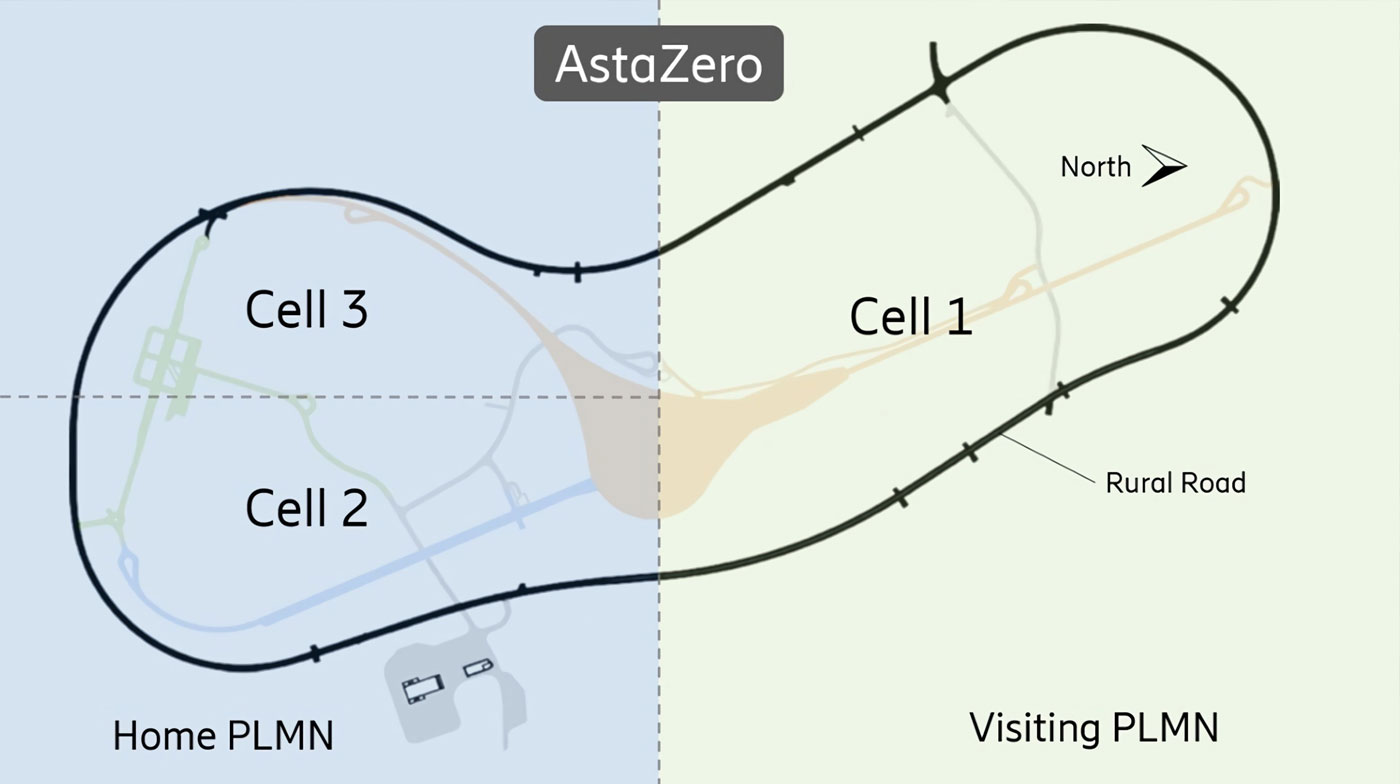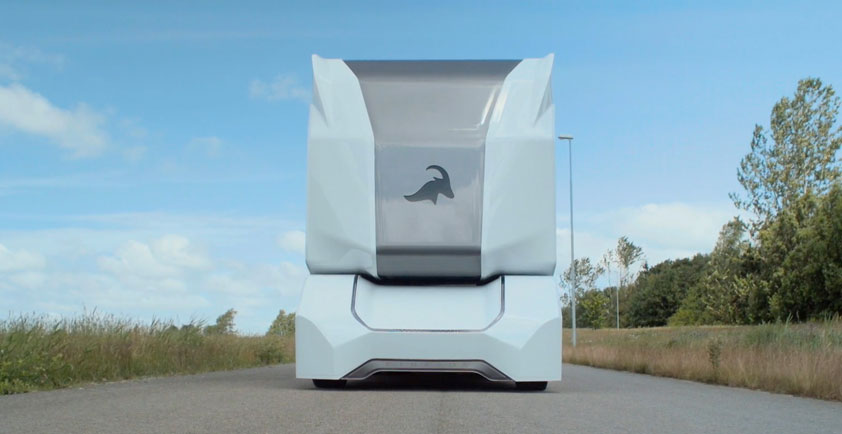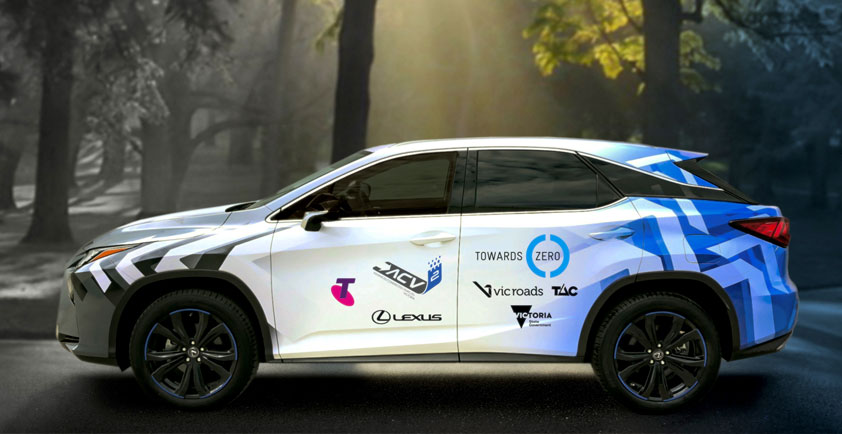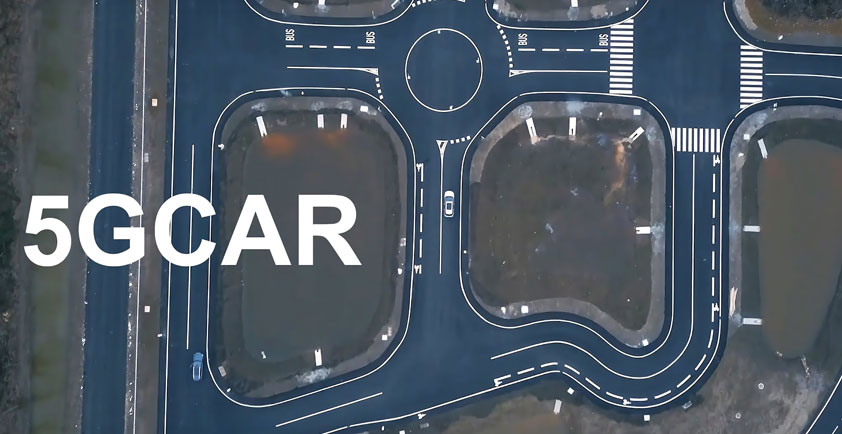

KEEPING VEHICLES CONNECTED WHEN THEY CROSS BORDERS
While cellular networks have very wide coverage and are designed to manage rapidly moving users, challenges still exist. When travelling across country borders, for instance, the mobile network operator will change which can cause delays or disrupt service. Together with Daimler AG we have tested and demonstrated a way to overcome this issue and ensure service continuity, even at country borders.
Connected vehicles are already part of everyday life for millions of drivers, just think of real-time traffic information and in-car infotainment. Emerging services include assisted driving and autonomous vehicles. All these rely on fast and reliable mobile connectivity through regular, commercial mobile networks. Uninterrupted service is key for a good and safe user experience.
More advanced services for assisted driving, better vehicle performance, traffic monitoring and energy efficiency are being developed at a fast pace, supported by artificial intelligence and other emerging technologies.
Cellular networks are recognized as the most efficient, future looking, safe, and economic alternative. 4G LTE networks already support today's and many future autonomous car services, while 5G will provide the real-time communication for some advanced and high demanding services. At Ericsson, we endeavor to use the latest technology to ensure reliable, secure and fast communication infrastructure is available everywhere, even across country borders.
In most cases, when travelling across country borders the mobile network operator will change, which can cause delays and even interrupted service.


Tests made with Daimler AG at the AstaZero test site near Gothenburg, Sweden, concluded that by activating and configuring some additional standard software features in the mobile networks, the interruption in connectivity could be reduced to approximately 1 second, which is believed to be sufficient for most use cases. When additional extra effort to configure the networks also was taken, the interruption was further decreased to 100 milliseconds. This demonstrates that close to negligible interrupts are possible at border crossings and is believed to allow most applications and use cases to survive.
Reducing cross-border delays
The reason that connectivity is lost, sometimes for minutes when changing country borders and thus changing serving mobile network, is that the User Equipment (UE) e.g. connected smartphone or vehicle equipment must connect to a new network which takes some time. In other words, it scans the spectrum to find a network it can (try) to use, after which the UE needs to register at this new network.
A lost connection affects many use cases, e.g. causing voice sessions to be dropped, having a severe impact on autonomous (self-driving) vehicles. Since the vehicle manufacturer or service provider is liable for the vehicle, if connection to central control equipment is lost, the vehicle might have to be taken out of self-driving mode or slow down.


Setting up new borders
At the AstaZero test site, we created a fictional country border, by configuring the mobile network we were using to emulate two different Mobile Network Operators (MNOs), see illustration above.
This was done using Ericsson virtualization techniques to create two virtual mobile core networks. The radio network was configured to support these two mobile core networks with some radio cells (cell 2 and 3 in the illustration) belonging to one and some (cell 1) to the other virtual mobile network. These two networks were then configured for different levels of roaming to measure the connection interruption.
First, a common basic type of roaming was configured where in this scenario only the Home Subscriber Server (the database in the subscriber's home network) is consulted to obtain user subscription data when a UE attempts to connect to a visiting mobile network, which is referred to as the "baseline". This normally results in several minutes of interruption and session breakdown since the new IP address has to be allocated to the UE.
Secondly, a step we can call 'Idle mode mobility" was configured, which requires a limited configuration effort. It involves configuration of an additional roaming interface between Mobility Management Entities (MMEs) in the two networks to be able to trace back to the previous connection and resume the user plane connectivity. Additionally, these two networks were configured to be equivalent networks, meaning the UE would know that it is allowed to use both networks. Furthermore, a Radio Access Network (RAN) feature called "Release with redirect" was configured, which assists the UE in finding the frequencies to use in the other network, i.e. to avoid that the spectrum needs to be searched for a network to use. This scenario resulted in a loss of user plane connectivity for around 1 second.
In the final step, the networks were configured to support complete handover (i.e. "S1 Handover") of the user plane connection between the networks, which involves somewhat more configuration and coordination between networks since additional information about neighboring RAN nodes and radio cells is required. This scenario resulted in a loss of user plane connectivity for around 0.1 seconds.
Summary
To summarize, the results of the test prove that by activating and configuring some additional standard software features in the mobile networks between MNOs, the interruption in connectivity could easily be reduced to approximately 1 second, which is believed to be sufficient for most use cases, including C-ITS (cooperative intelligent transport systems) services. If additional extra effort to configure the networks for HO was also taken, the interruption was further decreased to 100 milliseconds. This demonstrates that close to negligible interruptions are possible at border crossings and is believed to allow most applications and use cases to survive.
Co - authors:
Tomas Nylander - Researcher concepts
Roland Gustafsson - System Manager
Daniel McGillivray - System Manager
Henrik Sahlin - Master Researcher













